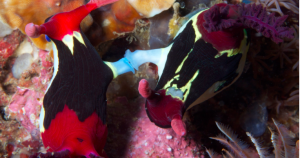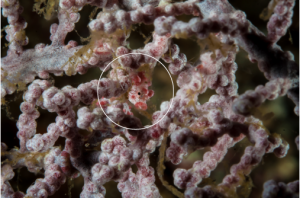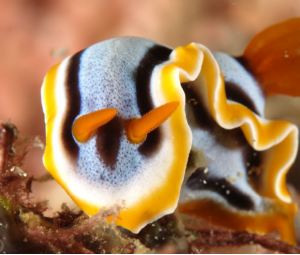Jayvee Fernandez is the Manila Bulletin’s social media group head, and in his spare time, he is passionate about diving and photographing underwater flora and fauna.

Animal Scene sat down with Jayvee to talk about the burgeoning field of underwater photography, his tips for interacting with animals underwater, and for photographing even the shy species of fish and other saltwater fauna.
Q: When did you begin to dive, and how often do you dive? Where are your favorite dive spots, and why?
A: It was 2009 in Anilao, which is the starting point for most Manilenyos. Relatively near, lots of resorts, and the diving is rated as world class.
It’s mainly due to my dad—he wasn’t a diver but he always kept me interested in fish. We had freshwater tanks at home and I even remember writing my high school term paper on the proper methodology of building a freshwater tank. We had tons of Betamax tapes of Ocean Quest and other wildlife shows in the 80s.
I also needed to set expectations for myself. I knew I couldn’t be an astronaut in my lifetime so being a scuba diver was the next best thing to floating in space, exploring alien lands…It’s basically the same thing.

Q: Can you tell us how you got into underwater photography? Which animals are your favorite underwater photography subjects?
A: I used to dive every week. It’s pretty common for new divers to do that. After a while though, you look for other ways to challenge yourself and add variety to dives. I did enjoy land photography, so the natural progression would be to go for underwater photography. And really, it’s a cool way to share what you saw underwater with your friends, especially on Facebook and Instagram.
I enjoy macro photography: that is, taking photos of small critters. Anilao is full of them. It’s actually the “macro capital of the world” as dubbed by scientists like Terry Gosliner from the California Academy of Sciences. So I’m in the right place.

Q: Can you share with us your favorite underwater photos and tell us a little bit about them?
A: I have a lot, but Pygmy sea horses are some of my favorites. They’re as small as a grain of rice cut in half and you can’t spend too much time shooting them because they easily get stressed from the flash photography. So it’s really the challenge of finding one in the first place, steadying your hand to get a few shots, then leaving them in peace.
Q: What are the peculiar challenges of photographing animal underwater? Which marine animals have proven to be the hardest to photograph, and why?
A: Macro photography is by itself hard in nature. I don’t consider myself an expert; I’m far from it. I’m just learning on the go. It’s like a treasure hunt. You get different things during different times of the year and different times of the day. Whenever I see a crinoid, I move closer to see if maybe, just maybe, I can find a squat lobster. Or if there’s a barrel sponge, I try to look for a candy crab. As you dive, you gain intimate knowledge about the ocean and you see how there’s a symbiotic relationship between critters and their habitats, mostly for protection.

Q: What advice do you have for those who would like to take up underwater photography who would like to focus on marine animals? What tips can you give from your experience in photographing fish and other marine animals?
A: You need to be able to learn how to dive first. I wasn’t doing photography regularly until I got way past almost 2 years of diving. You need to be very comfortable underwater before being able to manipulate a camera.

Q: Divers in places like Anilao have been bringing attention on social media to issues like poaching. What role do responsible divers play in preserving the marine ecosystem, in your experience? What marks a responsible diver who respects marine life?
Many divers who are also photographers have been working on conservation projects. I know that some groups take photos of the reefs and donate them as part of education training for coastal communities—many of these communities have not seen the reefs and become amazed at how pretty they look (and thus are more careful with where they throw their trash).

There are a few basic rules for underwater photography:
• Don’t touch the corals.
• Don’t touch the fish.• Don’t take too long photographing a subject. That involves the discipline of maintaining your buoyancy and being aware of your surroundings.
• Don’t risk the marine life in exchange for a good photo.
But the best kind of involvement is when divers work together with communities and resorts to build and transition towards dive tourism, and not net fishing.

In the long run, communities can earn more from sustainable tourism practices. Educating communities, training dive masters and spotters, training boat men—all of these form part of sustainable tourism.
Photos by Jayvee Fernandez
This appeared in Animal Scene’s May 2016 issue.




